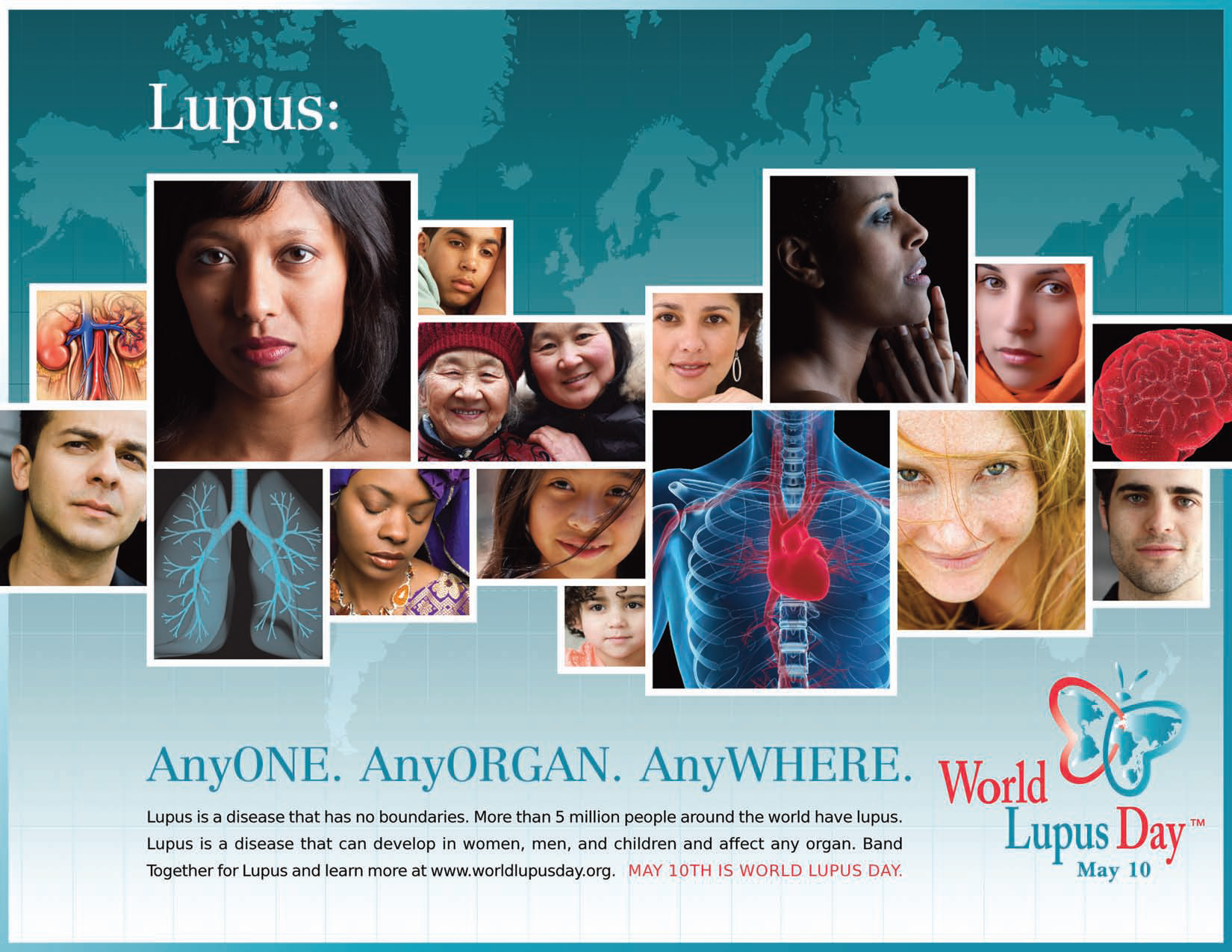 Imagine being bothered by sunlight, being covered in a rash, suffering fatigue, mouth sores, kidney and joint problems, as well as experiencing substantial hair loss and the swelling of lymph nodes. Sounds awful, doesn’t it?
Imagine being bothered by sunlight, being covered in a rash, suffering fatigue, mouth sores, kidney and joint problems, as well as experiencing substantial hair loss and the swelling of lymph nodes. Sounds awful, doesn’t it?
World Lupus Day was created to help us understand that this seemingly random grab bag of symptoms is actually a debilitating, chronic autoimmune disease suffered by approximately 5 million people worldwide, with 1.5 million of them living in the United States alone. In short, lupus causes the immune system to become overactive, creating antibodies that attack healthy tissue causing pain, inflammation and damage in a given part of the body.
Although lupus can be fatal, there is currently no known cure. Sadly, a large majority of people have little to no idea about lupus, often confusing it with arthritis, a much less serious disease. Many people have no idea lupus even exists until they themselves or somebody they know is diagnosed with it. This is the problem World Lupus Day was created to combat.
The History of World Lupus Day
World Lupus Day was created by Lupus Canada in 2004 to raise awareness of this little-known disease that can have devastating effects on sufferers and their families. It was organised by lupus organisations from thirteen countries, who called for their governments to increase funding for research, provide better patient services, increase epidemiological data and raise awareness.
Ever since then, the day has been observed in an increasing amount of countries all over the world. A high profile supporter of World Lupus Day is musician and philanthropist Julian Lennon, who is a Global Ambassador. Other celebrities who have made sizable contributions to the Lupus Association of America are Daniel Radcliffe, Lady Gaga and Ian Harding.
Source: Text: DAYS of the YEAR Images: Journée Mondiale, Dreamstime.com
 Over 1:1000 Canadian men, women and children are living with lupus and while we work towards our vision of life without lupus we want to ensure people living with lupus are living well.
Over 1:1000 Canadian men, women and children are living with lupus and while we work towards our vision of life without lupus we want to ensure people living with lupus are living well. Imagine being bothered by sunlight, being covered in a rash, suffering fatigue, mouth sores, kidney and joint problems, as well as experiencing substantial hair loss and the swelling of lymph nodes. Sounds awful, doesn’t it?
Imagine being bothered by sunlight, being covered in a rash, suffering fatigue, mouth sores, kidney and joint problems, as well as experiencing substantial hair loss and the swelling of lymph nodes. Sounds awful, doesn’t it? 
